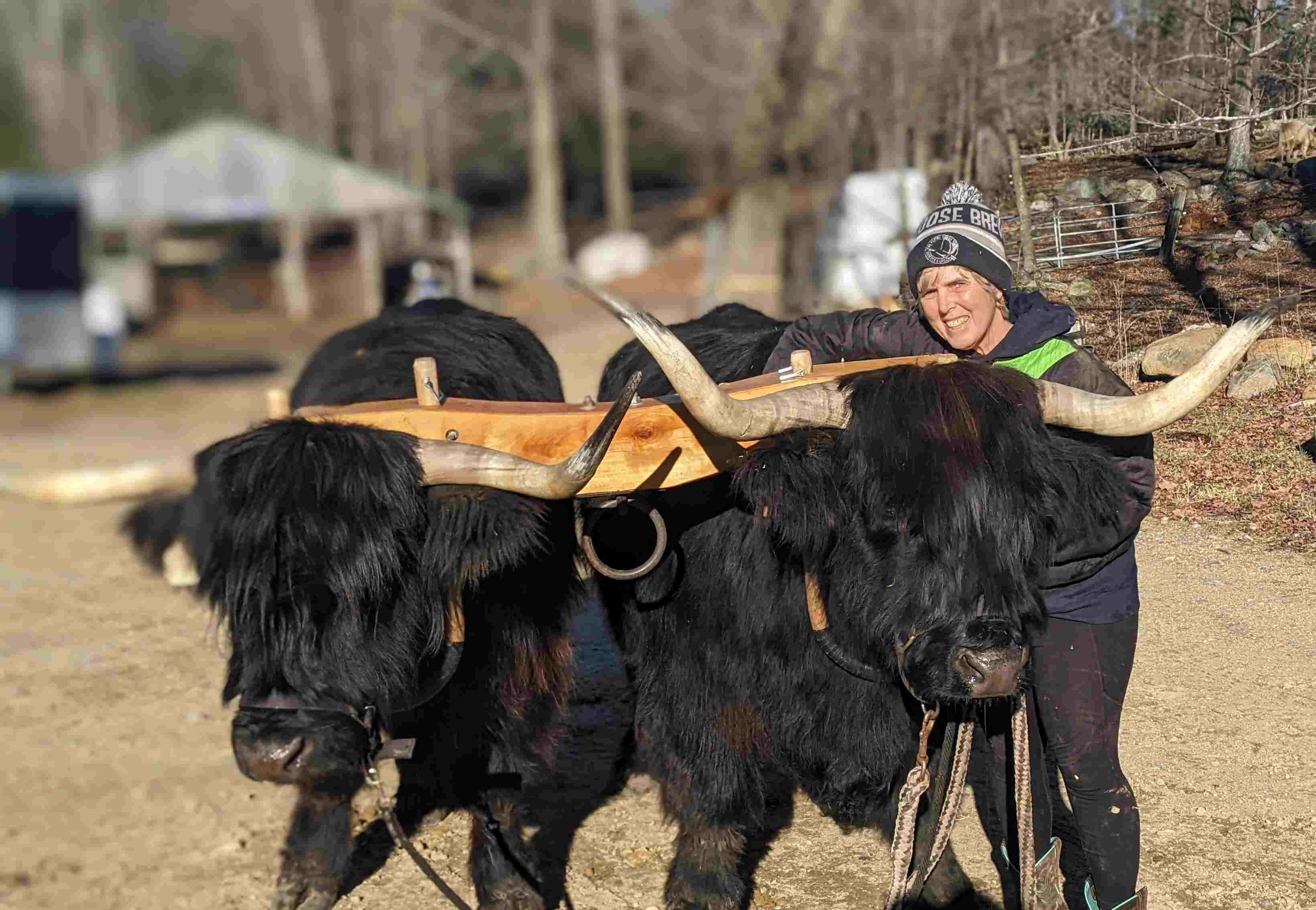Weaning calves before winter
posted on
October 31, 2021

Denali is one of the Miles Smith Farm calves being weaned. It’s a noisy time at the farm while the calves learn to be independent of mom. You are welcome to visit them Wed-Sat from 10 a.m. and 5 p.m.
My husband looked at me and waited until the ruckus stopped. “What did you say?” Bruce asked. I heard him, but then the deafening bawling of calves started again, and it was useless to respond. Louder than stock cars roaring around a NASCAR track, the calves were clamoring for their mothers' attention. It’s October, and that means weaning time at Miles Smith Farm.
Weaning is stressful for both Mom and baby, so we try to make it as comfortable as possible. We put the weanlings in a pen with plenty of food and water. A metal gate separates them from their mothers so the calves can sniff and nuzzle them. The calves don’t need milk anymore, but they miss their mothers' licking and their calming presence.
Each day I take each calf’s temperature and check for diarrhea. If a calf seems sick, I’ll give extra electrolytes, Kaopectate for diarrhea, and in extreme cases, penicillin. I haven’t lost a weaning calf since 2012.
Now I'm Mom
Up until now, the babies hid behind Mom or dashed off when I approached. Now I get to be their “mom.” Each calf is fitted with a one-piece halter that includes a lead line. At feeding, I’ll grab a calf’s rope and hold it until they stand still long enough for me to pet them, then we go for a walk.
Elsie acted like a child throwing a tantrum, falling to the ground four times before giving up and walking on her lead rope. Rachael, a silver heifer and the smallest calf, walked behind me without fuss from the first day, while Ginger reared like a wild pony on her first walk. At about 150 pounds each, these calves are still small enough for my 155 pounds to handle.
I do get help from a sturdy post, though. When a calf is first haltered, I tie the lead line to the post. I then stand nearby and watch while the youngster fights with the stationary post and not my fragile 69-year-old body. If the calf gets in trouble, I can pull the quick-release knot and help the calf without going near enough to get hurt.
The Power of the Rope
After a few tantrums, most calves give up fighting the rope. Once the power of the rope is learned, it is never unlearned. When that 150-pound calf grows into a 1,000-pound cow, she will never fight the halter or lead rope again. It is a forever lesson and that's why I do this training early. I have purchased older cattle and trained them in the same way, but dealing with a calf is the way to go.
After three or four days, the calves get used to being separated from Mom, who can now focus on fattening up for winter. The calves stay together all winter and get individual care and ample food to make sure they thrive. Still, no one likes change, including calves. I’m always glad when the bawling is over, and Bruce and I can once again hear ourselves think.
Meet the Calves
Now that calves are ready for company, you might want to visit the farm to meet Frida, Denali, Spice, and all the others. You are welcome to come and take a self-guided tour of Miles Smith Farm Wed-Sat between 10 a.m. and 5 p.m. to see them.



